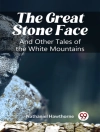Sinclair Lewis’s *Main Street* is a seminal exploration of small-town America in the early 20th century, marked by its incisive critique of cultural parochialism. Through the eyes of its protagonist, Carol Kennicott, the novel unfolds the stark contrasts between her artistic aspirations and the oppressive conformity of the fictional town of Gopher Prairie. Lewis employs a blend of satirical wit and acute social observation, crafting a narrative that is both engaging and thought-provoking. The book’s rich characterizations and brilliantly intricate dialogue reveal the profound tensions between individualism and societal expectation, echoing the broader movements of Modernism in American literature during the Roaring Twenties. Sinclair Lewis, the first American to win the Nobel Prize in Literature, was notably influenced by his own Midwestern roots and the limitations he perceived in the society around him. Born in Minnesota and raised in a small town, Lewis’s own struggles with conformity and his fierce advocacy for the role of the individual in society permeate his writing. *Main Street* aligns with his deep-seated desire to challenge the norms of provincialism and celebrate progressive ideals, reflecting his tumultuous relationship with Americana. *Main Street* is essential reading for anyone interested in understanding the complexities of American identity and the often stifling nature of small-town life. Lewis’s unflinching portrayal of societal dynamics will resonate with contemporary readers, prompting reflection on the ongoing tensions between personal aspirations and communal constraints. This novel remains a critical lens for examining the fabric of American society and a testament to the enduring struggle for self-fulfillment.
Yazar hakkında
Sinclair Lewis, an American novelist, short-story writer, and playwright, was born in Sauk Centre, Minnesota, on February 7, 1885. His keen observation and satirical style positioned him as a prominent social critic of American life in the early 20th century. Lewis propelled himself into literary renown with his novel ‘Main Street’ (1920), a critical portrayal of small-town provincialism, which mirrored his own hometown experiences. His depiction of the setting, Gopher Prairie, alongside his vivid character Carol Kennicott, who rebels against the banality of her town, struck a chord with readers seeking to understand the social fabric of American communities. Not merely content with examining rural life, Lewis addressed topics such as commercialism, materialism, and societal norms across a number of works, leading to his recognition as the first American to receive the Nobel Prize in Literature in 1930. His literary contributions offered an incisive, and often unflattering reflection of America, through an impressive corpus that includes ‘Babbitt’ (1922), ‘Arrowsmith’ (1925), and ‘Elmer Gantry’ (1927), each dissecting aspects of the American Dream and exposing its discontents. Sinclair Lewis remains an enduring figure in literature, his works continuing to invite analysis and discussion regarding authenticity, conformity, and the pursuit of happiness within the American ethos.












